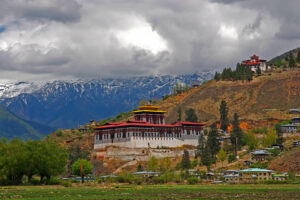The Himalayan kingdom of Bhutan is to halve the $200 daily fee it charges tourists in an effort to boost a sector still struggling to recover a year after the end of Covid-19 restrictions.
Bhutan raised its “Sustainable Development Fee” to $200 per visitor per night, from $65, when it ended two years of Covid restrictions in September last year saying the money would go to offset the carbon generated by visitors.
The new rate of $100 per night would come into effect from September and last for four years, the government said in a statement late on Friday.
“This is in view of the important role of the tourism sector in generating employment, earning foreign exchange … and in boosting overall economic growth,” it said.
Isolated for generations, Bhutan opened to tourists in 1974 when it received 300 visitors. The number soared to 315,600 in 2019, up 15.1% from a year earlier, official data showed.
Bhutan has always been wary of the impact of mass tourism and it bans mountain climbing to preserve the sanctity of its peaks. The tourist fee has limited arrivals to bigger spenders who make up a fraction of the numbers that visit nearby Nepal.
Nevertheless, Bhutan hopes to raise the contribution of tourism to its $3 billion economy 20%, from about 5%.
Dorji Dhradhul, director general of the Department of Tourism, said the halving of the fee could boost arrivals in the September-December peak tourist period, which includes many religious and cultural events in the mainly Buddhist country.
In June, the government eased rules on length of stay and fees for tourists but numbers have not picked up as expected.
Dhradhul said more than 56,000 tourists had visited Bhutan since January but about 42,000 were Indian nationals, who only have to pay a fee of 1,200 Indian rupees ($14.5) a day.
About 50,000 Bhutanese are employed in tourism which earned about $84 million a year in the three years before the pandemic in foreign exchange.

